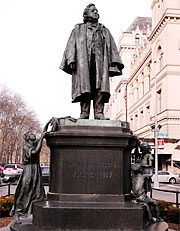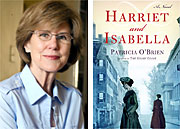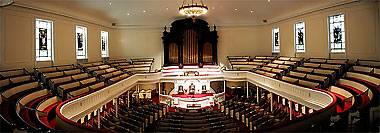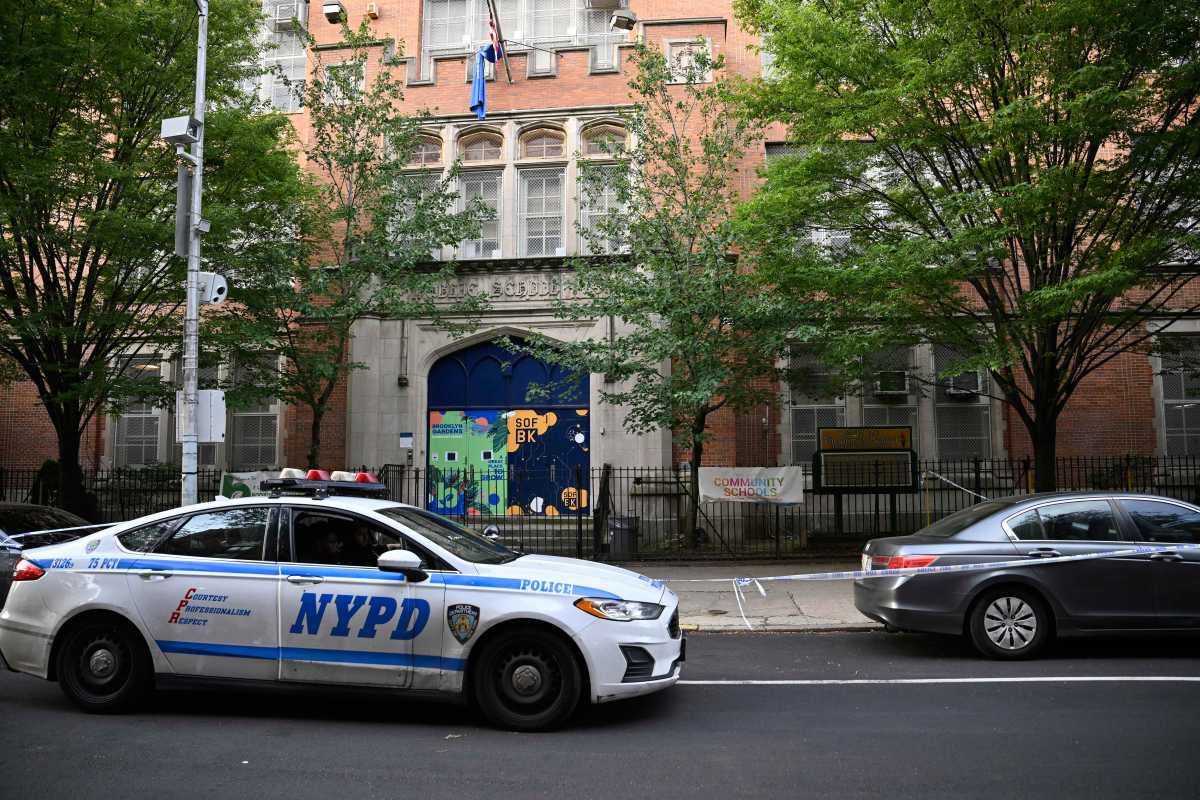While the country titters over the downward spirals of pop stars and momstrosities, those scandals pale in comparison to the maelstrom of publicity that surrounded Brooklyn Heights preacher Henry Ward Beecher 130 years ago.
Accounts of the Beecher trial riveted 19th-century America, and with this month’s release of her eighth novel, “Harriet and Isabella,” author Patricia O’Brien recalls the media frenzy that besieged the Plymouth Church of the Pilgrims’ minister who was accused of having an affair with a married woman.
“He was the [Bill] Clinton of his time,” said the Washington, D.C.-based author told GO Brooklyn. “There were scandals before, but [Henry’s] involved every juicy topic there was at a time when people were changing their views on morality and things were freer and looser. I wanted to explore the personal cost and the feelings of the people involved. [The Beechers] were flesh and blood and walked the streets of Brooklyn. They were the Kennedys of the 19th century, and they really were just as glamorous.”
In “Harriet and Isabella,” O’Brien imagines the repercussions wrought by the rift between Beecher’s real-life sisters, Harriet Beecher Stowe and Isabella Beecher Hooker, who took opposite sides when Henry stood trial for adultery in 1875.
O’Brien was especially intrigued by the public lives of Harriet, who penned the abolitionist novel “Uncle Tom’s Cabin” in 1852, and her brother Henry, whose sermons were so inspiring that Manhattanites would take the ferry over to Brooklyn to hear them. Even Abraham Lincoln crossed the East River to pray at Plymouth Church.
But Isabella’s accomplishments were a surprise to the scribe.
“The more I read about Isabella, the more I was drawn to her,” said O’Brien. “She was the youngest of 11 children and wanted to be known, not just living in the shadow of her brother and sisters. She came late to the suffragist movement but became quite well known, forging her own way.
“What took me into [the story] as a novelist, was wondering how these people handled having such an incredible scandal explode in the midst of a very celebrated, respected and accomplished family. Harriet and Isabella split because Harriet remained very loyal to Henry. Isabella thought he was a hypocrite, but said so publicly, and this caused a major rift in the Beecher family.
“I wondered, ‘How did it feel for Henry to find himself on trial after becoming so revered … and for Isabella to be thrown out of her family?’ ”

O’Brien has familiarized herself with the streets of Brooklyn Heights over the years, during her trips to visit her daughter Marianna Koval, president of the Brooklyn Bridge Park Conservancy, who lives in nearby DUMBO.
“A few years ago, there was a particularly beautiful, snowy night, and I thought, ‘This place looks like it must have in the 19th century,’ ” recalled O’Brien. “When you put your hand up and block out the cars, you can almost hear the carriage wheels. That really drew me.”
When the veteran author — whose last novel, “The Glory Cloak: A Novel of Louisa May Alcott and Clara Barton,” also took place in the 1800s — rolled up her sleeves to delve further into the history of the Beecher clan, she harvested material from several local sources, including the Brooklyn Historical Society, Plymouth Church and the Brooklyn Public Library’s online archive of the original Brooklyn Eagle.
“When I was writing the chapters on the trial, I kept the [archive] open on my computer screen,” recalled O’Brien. “I read the coverage day by day. I thought of myself settling down into a horsehair sofa in Brooklyn Heights and snapping open the [paper] to read what was new in the Beecher trial each day.
“[The accounts] made it so much easier to know what the atmosphere was like in the courtroom. The crowd coming in on a rainy or snowy day, the smell of damp wool. … Newspapers are the first rough draft of history.”
Although the research and writing of “Harriet and Isabella” took O’Brien two years, the veteran journalist — whose many stakeouts during her 20 years in the newspaper biz were not unlike how reporters stalked Beecher’s Hicks Street home in 1887 — says she was careful to not be too true to history.
“My whole point when I write historical fiction is that I want to write a story with a true historical structure but within the structure, there are many chances for imagination to build a story,” explained O’Brien.
“I am very fond of him, even though I think he was guilty,” admits O’Brien. “He was like many people who find themselves very powerful: People are drawn to them; they are charismatic and sexually seductive.”

“Harriet and Isabella: A Novel” by Patricia O’Brien (Touchstone/Simon & Schuster, $25) can be ordered at BookCourt (163 Court St. at Dean Street in Cobble Hill). For information, call (718) 875-3677.

























